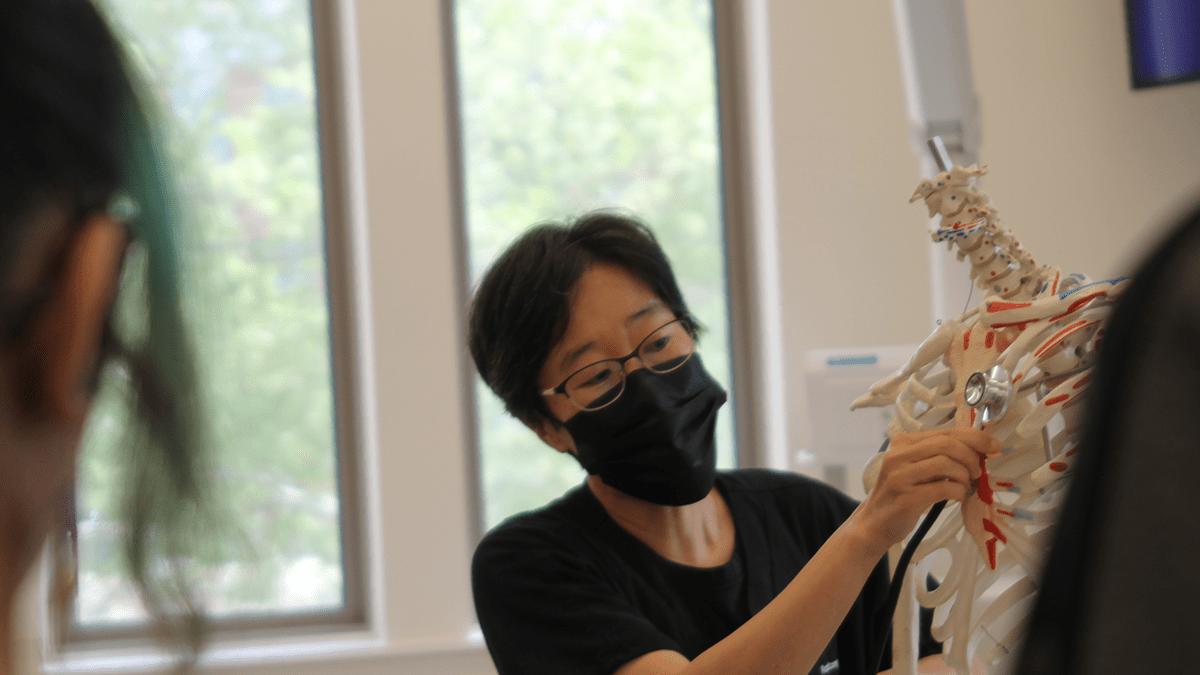Anatomy outreach days add context to high school students’ knowledge
Specimens, tissues, brains, hearts, lungs and muscles – just some of the donated human organs and tissues visiting high school students get to see at The Ohio State University College of Medicine Anatomy Days.
In early May, 750 students and their teachers from 20 schools around Ohio participated in educational outreach in diverse anatomy labs where they examined healthy and unhealthy organ tissue.
This is the third year of the large magnitude of Anatomy Outreach Days, yet it began 12 years ago. Schools attend the anatomy lab and regular anatomy outreach sessions throughout the school year and are invited back for the Anatomy Outreach Days event. Nearly 80 volunteers assisted at this year's three-day event.
Koral Blunt, a fourth-year medical student, walked a group of students from Fort Recovery High School through the steps undertaken to repair the heart. As they viewed, touched and held different organs, they saw the anatomy of the human heart up close, including one with visible disease.
“The heart is usually the favorite organ of the students,” Blunt says. “This program gives high school students engagement with anatomy they wouldn’t have without our college showcasing this to younger generations.”
Students and teachers agreed. Fort Recovery junior Alesha Overman said unlike the diseased heart, the normal heart she held in her gloved hand felt soft to the touch.
“The tumor is hard when I touch it,” Overman says.
Her anatomy teacher, Kathy Schwieterman, said their almost 100-mile drive from west central Ohio to Ohio State gave students a real-life perspective unlike what they learn from textbooks.
“There is no other way for students to see actual human organs and engage with medical students and faculty about the human body,” Schwieterman says.
Pilard Hanna, MS, a graduate teaching associate in the Department of Biomedical Education and Anatomy, says adding new stations to Anatomy Day each year expands outreach and the ability for students to explore new horizons. Hanna said that the urology and CPR stations are new this year and this year was the first time the group collaborated with the Department of Urology.
"It's so valuable having a team of urologists teach the high school students about kidneys and different renal diseases like kidney stones," Hanna says.
Students also had the chance to gain clinical perspectives by seeing advancements in ultrasound and anatomy through virtual reality headsets.
Hanna wasn’t surprised when she saw students huddled around the presentations on lung anatomy and pathologies and heart organs. She nodded her head when the students pointed out evidence that the donated heart had been through a coronary artery bypass graft.
“Outreach allows us to share the knowledge we’ve gained, give back to the community and empower students and different community groups to know more about their bodies and health,” Hanna says.
